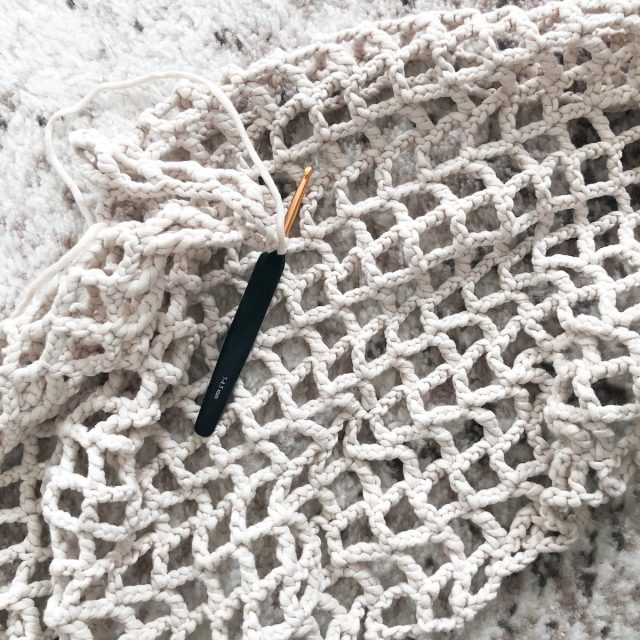Are you looking for a new and creative hobby? Crochet is an enjoyable activity that anyone can learn with the right guidance. This article on crochet for beginners will offer helpful tricks and tips to get you started in the craft. From essential tools to basic stitches, this comprehensive guide will provide everything you need to know to complete your crochet journey. With a few simple instructions and some practice, you’ll soon be able to create beautiful pieces of yarn art.
What is Crochet?
Crochet is a craft technique that uses a hook and yarn to create fabric or other decorative items. It’s a versatile and accessible craft that can be used to create a wide range of items, from clothing and accessories to home decor and toys.
In crochet, the hook pulls loops of yarn through other loops to create a series of interlocking loops that form a fabric. This fabric can be worked in various stitches, including single, double, and treble crochet. Crocheters can create a virtually limitless range of designs and patterns by combining different stitches and yarn colors.
One of the appealing aspects of crochet is its portability and affordability. All you really need to get started is a hook and some yarn, which can be purchased inexpensively at craft stores or online. You don’t need much space or expensive equipment to enjoy this craft, making it accessible to people of all ages and skill levels.
While crochet has been around for centuries, it has seen a surge in popularity in recent years, with online communities and social media platforms like Instagram and Pinterest providing a platform for crocheters to connect and share their work. There are also many resources available, including books, tutorials, and online classes, that can help beginners get started and experienced crocheters hone their skills.
Whether you’re looking for a new hobby, a way to unwind and relax, or a creative outlet for your artistic talents, crochet is a fun and rewarding craft with something to offer everyone.
Materials: Tools Needed

Crochet is a versatile craft requiring only a few essential tools and materials to start. Here are the essential tools and materials you’ll need to begin your crochet journey:
- Crochet Hook: A crochet hook is a long, thin tool with a hook at one end used to make the loops and stitches in crochet. Crochet hooks come in a range of sizes and materials, and the size you need will depend on the weight of the yarn you are using and the tension of your stitches.
- Yarn: Yarn is the most important material in crochet, and it comes in a wide range of colors, textures, and fibers. Choose a yarn suitable for the project you want to make and ensure you have enough to complete the project.
- Scissors: Sharp scissors are essential for cutting yarn, weaving in ends, and trimming finished projects.
- Stitch Markers: Stitch markers are small, removable markers that can be used to mark the beginning and end of a row or to mark specific stitches or pattern repeats. They come in various sizes and shapes and can be made from plastic, metal, or other materials.
- Tapestry Needle: A tapestry needle is a large, blunt needle with a large eye used for weaving in ends, seaming pieces together, and adding embellishments to finished projects.
- Measuring Tape: A flexible measuring tape is useful for measuring the length and width of your crochet project, checking gauge, and measuring yarn.
In addition to these basic tools, a few other optional tools and materials can be useful, including stitch counters, row counters, pattern books, or online resources. With just a few simple tools and materials, you can start exploring the endless possibilities of crochet and creating beautiful, handmade items to wear, use, and give as gifts.
Techniques: Basic Stitches
Crochet is made up of a variety of stitches that are used to create unique and beautiful designs. Here are some of the most basic stitches that are essential to crochet:
- Chain Stitch (ch): The chain stitch is the foundation of most crochet projects. It is created by making a loop with the yarn and pulling another loop through it.
- Single Crochet (sc): The single crochet stitch is the most basic stitch in crochet. It is created by inserting the hook into a stitch, yarn over, and pulling a loop through the stitch, then yarn again and pulling it through both loops on the hook.
- Double Crochet (dc): The double crochet stitch is slightly taller than the single crochet. It is created by yarn over, inserting the hook into a stitch, yarn over again, and pulling a loop through it. Then yarn over again and pull through two loops on the hook, then yarn over again and pull through the remaining two loops.
- Half Double Crochet (hdc): The half double crochet stitch is a middle ground between the single and double crochet stitches. It is created by yarn over, inserting the hook into a stitch, yarn over again, and pulling a loop through it. Then yarn over again and pull through all three loops on the hook.
- Treble Crochet (tr): The treble crochet stitch is tall and creates a loose, lacy fabric. It is created by yarn over twice, inserting the hook into a stitch, yarn over again, and pulling a loop through the stitch. Then yarn over again and pull through two loops on the hook, then yarn over again and pull through the next two loops, then yarn over again and pull through the last two loops.
Once you’ve mastered these basic stitches, you can combine them in various ways to create more complex designs and textures. There are also many variations of these stitches, such as the slip stitch, the shell stitch, and the popcorn stitch, among others. Learning these stitches and techniques can help you unlock the full potential of crochet and create a wide range of unique and beautiful projects.
Projects: Ideas to Try
Crochet is a versatile craft that can be used to create a wide range of items, from simple accessories to intricate home decor. Here are some project ideas to try as you explore the world of crochet:
- Scarves and Shawls: Scarves and shawls are a great way to practice basic stitches and create a practical and stylish accessory. They can be made in a variety of colors and textures to suit your personal style.
- Hats and Headbands: Hats and headbands are a fun and easy project that can be customized with different colors and stitches. They make great gifts and can be made in various sizes to fit children and adults.
- Amigurumi: Amigurumi are small, stuffed toys that are made using crochet. They can be made in various shapes and sizes and are a great way to practice shaping and increasing and decreasing stitches.
- Blankets and Throws: Blankets and throws are a more ambitious project, but they can be a satisfying and rewarding way to use your crochet skills. They can be made in various patterns and colors and customized to fit any size bed or couch.
- Dishcloths and Washcloths: Dishcloths and washcloths are quick and easy projects that are perfect for beginners. They can be made using simple stitches and can be customized with different colors and patterns.
- Pot Holders and Trivets: Pot holders and trivets are practical and functional items that can be made using crochet. They can be made in various shapes and sizes and customized with different colors and textures.
- Home Decor: Crochet can also be used to create a variety of home decor items, such as wall hangings, plant holders, and pillow covers. These projects can add a personal touch to your home and are a fun and creative way to practice your crochet skills.
With practice and creativity, the possibilities for crochet projects are endless. So grab your hook and yarn, and start exploring the crochet world!
Tips: Helpful Hints
Crochet can be a fun and rewarding hobby, although it can also be frustrating at times. Here are some tips to help you improve your crochet skills and make the most of your crafting time:
- Practice, practice, practice: Crochet takes time and practice to master, so don’t get discouraged if you don’t get it right away. Keep practicing, and you’ll start to see improvement.
- Use the right hook and yarn: Make sure you choose the right size hook and yarn for your project. The label on the yarn will typically recommend a hook size, so follow those guidelines to ensure that your project turns out the way you want.
- Keep tension in check: Tension is vital in crochet. If you crochet too tightly, your stitches will be difficult to work with, and your project may not lay flat. If you crochet too loosely, your stitches will be too loose, and your project may be floppy. Practice finding the right tension that works for you.
- Count your stitches: Counting stitches is essential to ensure that your project is the right size and shape. Take the time to count your stitches regularly, especially if you’re working on a pattern that requires a specific number of stitches.
- Use stitch markers: Stitch markers can help you keep track of your progress and keep your place in the pattern. Use them to mark a round’s beginning or indicate a specific stitch or section of your project.
Practice Makes Perfect
Practice is essential when learning how to crochet, especially for beginners. It takes time and dedication to perfect the movement and develop muscle memory, so crocheting becomes second nature. Even small details like tension control and stitch counting can be improved with practice. It’s a good idea to start off with basic stitches like single, double, and half-double crochet. Once mastered, gradually work up to more challenging patterns or techniques. Practicing regularly will make the process easier – even just taking 15 minutes daily can result in significant progress over time. Additionally, it’s essential to stay patient and consistent with practice. Most importantly, don’t get discouraged if something doesn’t turn out as planned or progress seems slow – every mistake is an opportunity for growth!
Conclusion: Wrap Up
To wrap up, we’ve gone through an overview of crochet basics and a few tricks to help you get started. Therefore, it’s important to remember that practice is key when learning any new skill, so don’t be discouraged if your first project doesn’t turn out perfect. With time and dedication, you can master the art of crocheting! Don’t forget to check out your local yarn store or online resources for extra tips and advice to keep improving your skills.
These stores often offer classes where experienced crocheters can share their expertise with community members. Finally, don’t forget to use high-quality tools like hooks and yarn that suit the design you want to make. This will help ensure that your projects are as successful as possible. With these tips in mind, happy stitching!






























